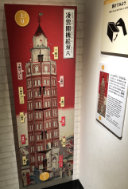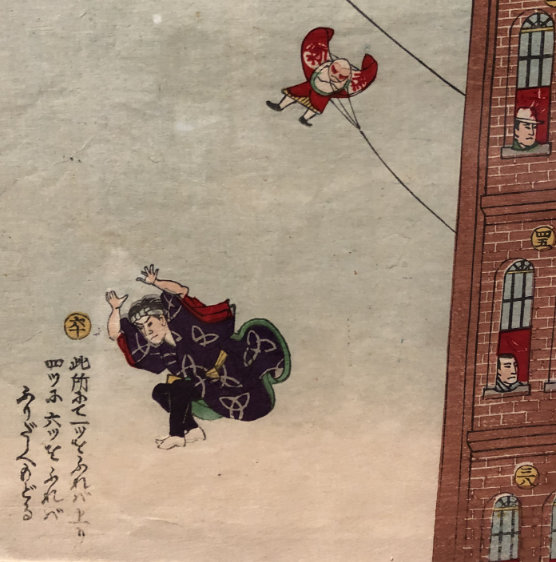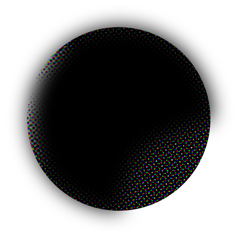After learning about sugoroku, I’ve started noticing it in various places. The first was a reproduction of a 1902 game in a gift shop in Otaru. Next was at a museum gift shop in Yokohama, and again at a park gift shop. Most recently was the Edo-Tokyo Museum having several exhibits. Hunting for sugoroku has turned into a hobby of mine!
Guide to Otaru


Otaru is a small town in Northern Hokkaido that once had a bustling financial district. This reproduction of a 1902 (Meiji 35) game is a guide to places in Otaru. Surprisingly large, it’s printed on very thin paper.
It begins with a train leaving a tunnel at the bottom right, with the players traverse the town before arriving at a panoramic view in the center. It really captures the ambiance of the town at the time.
Good Children Traffic Sugoroku


This is a reproduction of a 1945 (Showa 20) sugoroku produced by the local police department. After reading about sugoroku, the date took me by surprise. According to what I’ve read, sugoroku were not really produced during and immediately after the war. Included with it are some cardboard playing pieces.

According to the introduction, it was produced when cars and street signs were becoming more common, so it served as a teaching tool for kids to become familiar with them. You’ll notice that in addition to the locations, there are a number of street signs, particularly stop signs. There’s also two routes that may be taken, red and blue.
 The start location is the police station and the finish is Yokohama port. If you look at the finish, you’ll see a girl wearing red shoes aboard a ship. This is in reference to the famous Red Shoes rhyme.
The start location is the police station and the finish is Yokohama port. If you look at the finish, you’ll see a girl wearing red shoes aboard a ship. This is in reference to the famous Red Shoes rhyme.
Edo-Tokyo Museum

While at the Edo-Tokyo Museum, I was surprised to find several sugoroku exhibits, including an interactive version of Ryōunkaku.
Ryōunkaku

Ryōunkaku, a popular tower and the first elevator in Japan, became a natural topic of a sugoroku. Unfortunately, the actual building was destroyed in an earthquake, but there’s a scale model of it at the Edo-Tokyo museum. There’s actually two sugoroku at the museum depicting the tower– an interactive one with small doors that can be opened to reveal the interior and a framed paper version.
The sugoroku begins at the tower entrance, with the players working their way up through multiple rooms on each floor. The papers being thrown from the balloon may be in reference to a giveaway that was held.

Mitsukoshi

There was also a carpet version of a sugoroku manufactured by Mitsukoshi department store in 1928 (Showa 3) that depicts seasonal children’s games.
The start is kids leaving home and the goal is the Mitsukoshi Department Store.

Yokohama Yamate Sugoroku

This is a cloth sugoroku of local spots in Yokohama, specifically Yamate, Motomachi, and Chinatown. It includes a tiny die and several hajiki (coin sized flat glass) as playing pieces. Hajiki have their own game that is played similar to marbles, where the players flick their hajiki and try to hit others. I’ve never played sugoroku before, so my wife offered to play.
After carefully ironing the game cloth, we each chose a hajiki. She consistently rolled fives and sixes, so the game was over in just a few minutes. Along the way I got stuck in a loop between two places, but finally broke free. With how quickly it was over, I understood the comment in the Sugoroku book about games with more steps minimizing chance rolls. Similar to the traffic sugoroku, which is also from Yokohama, the motif of red shoes again makes an appearance, this time to marking both the start and the path.

After having spent so much time reading about sugoroku, it was fun to actually experience it, even if just briefly.
上り (Finish)
I wouldn’t have expected to be captivated by sugoroku when I first learned about them. The mechanics are very simple, but there’s a beauty to them that really intrigues me. A glimpse into life at the time they were made. Let me know in the comments if you’ve found any sugoroku in the wild.

